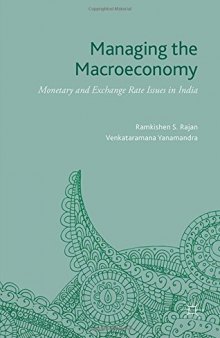 جزییات کتاب
جزییات کتاب
Since the liberalisation of its economy in 1991, India has experienced sustained current account deficits. These deficits were serviced by a massive influx of capital inflows, made possible by the gradual removal of or reduction in restrictions on foreign investments since 1991. However, things changed with the collapse of Lehman Brothers in September 2008. While a growth slowdown coupled with a deterioration of the current account balance was expected during the global financial crisis, the extent of negative spillovers to India was striking nonetheless. Despite bouncing back from the crisis and offering many growth-enhancing opportunities, India's continuing integration with the world has given rise to a host of new challenges in managing its economy, particularly given the absence of any type of coordinated global policy. This book sets out to provide an empirical assessment of some of India's crucial policy challenges pertaining to its monetary and external sector management. Rajan and Yanamandra provide an overview of the evolution of the macroeconomic environment and policies in India since 1991 and examine the country's monetary policy effectiveness by estimating the speed and strength of its interest rate transmission. The text explores the evolving exchange rate and reserve management policies in the country, consistent with its rapid integration with the global economy. In addition, the authors analyse the impact of movements of the Indian Rupee on the country's trade balance and domestic prices, and the relative stability of external financing in India with particular reference to foreign direct investment inflows. Overall, the book tackles important macroeconomic policy issues confronting India, informed by analytical frameworks, data and empirics.



 دانلود کتاب
دانلود کتاب

 جزییات کتاب
جزییات کتاب





 این کتاب رو مطالعه کردید؟ نظر شما چیست؟
این کتاب رو مطالعه کردید؟ نظر شما چیست؟
